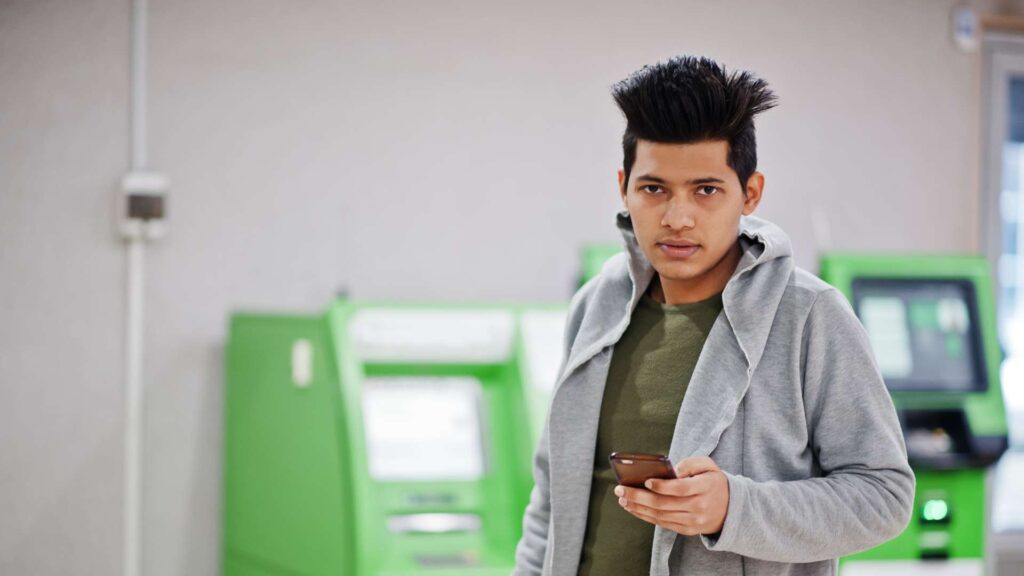Table of Contents
Introduction
In today’s world, digital spending is just a tap away. Financial decisions are becoming increasingly complex. Teaching kids about money isn’t just a nice idea — it’s essential. How to raise financially responsible kids has become a key question for parents everywhere. Financial literacy for kids is more important now than ever, not because we want them to stress about money, but because we want them to feel confident and prepared as they grow.
It’s not about turning them into financial experts overnight. It’s about planting small seeds of understanding now that can grow into lifelong confidence and healthy money habits later.
Beem helps you grow your savings faster with high-yield savings accounts that earn more than traditional banks. Track your goals, set up automatic deposits, and watch your money work for you.
Understanding What “Financial Responsibility” Really Means for Kids
Teaching kids financial responsibility is not about giving them a spreadsheet. However, we expect them to budget like adults. For kids, financial responsibility is all about building simple, everyday habits. It is like learning to save a portion of their allowance. It can also be about thinking before spending and beginning to understand the value of things.
It’s essential to distinguish between financial awareness and financial stress. The goal isn’t to burden kids with adult worries. It shouldn’t always be about bills or money problems. Instead, it’s about giving them the right tools. This will help them start recognizing how money works in their world. It can be at the grocery store or in their piggy bank. It can also start when they’re deciding between two toys.
Kids don’t need complicated financial lessons. What they need is consistency—regular, real-life conversations about money—and context. This allows them to connect those lessons to everyday situations. When taught in the right way, financial responsibility isn’t a chore. But it’s empowering.
Start with Everyday Money Conversations
You don’t need a formal lesson to start teaching kids about money. A trip to the grocery store, paying for gas, can be your chance. This is even a perfect opportunity to discuss a family budgeting decision. This will help you introduce simple money concepts. You turn routine moments into learning opportunities when you involve kids in small, age-appropriate ways. It can be like letting them compare prices or guess the total at checkout.
Being transparent about money is essential. But it doesn’t mean sharing every detail of your financial situation. You must know that a little openness goes a long way. When kids see that money is something talked about—not avoided—they begin to understand its value and purpose. This is without feeling overwhelmed.
Also Read: How to Save on Childcare: Share Care and Flexible Swaps
Age-Appropriate Financial Lessons
Ages 5–8: Start with the Basics
At this age, it’s all about understanding the difference between your wants and needs. You must use real-life examples. You must let them practice saving with a piggy bank or jars labeled spend, save, and give.
Ages 9–12: Give Responsibility
Tweens are ready to manage small amounts of money. You can try a weekly allowance tied to chores or good habits. You can help them set a goal. It is like saving for a toy or outing. You can also cheer them on as they work toward it.
Ages 13–18: Build Real-Life Skills
Teens can start managing bigger responsibilities. It can be, such as budgeting lunch money or handling a debit card. You can show them how to use a bank account. This will help them make smart spending choices and plan for things like outings or subscriptions.
Let Kids Make Money Mistakes—Safely
One of the best ways kids learn about money? By making a few small mistakes.
Perhaps they spend all their allowance on candy. They will not regret not saving for something more substantial. That’s okay. These low-stakes moments teach lessons that stick far better than lectures ever could.
The key is to let them feel the consequences. When kids reflect on their choices, reset their goals, and try again. They’re building real-world financial smarts in a safe and supportive way. Mistakes aren’t failures. But they’re stepping stones.
The Role of Allowances and Rewards
Allowances can be a great way to teach kids about money. But how you structure them matters. Some parents tie allowance to chores. This is while others give it separately to teach basic money management. There’s no one “right” way. This is why it depends on your values and what lessons you want to teach.
What’s important is helping kids connect effort with earning. They start to understand that money doesn’t just appear. But it’s something you work for. This is whether it’s helping around the house or reaching a goal.
Once they have money in hand, you can guide them to use it wisely. It can help you save a little, spend a little, and give a little. This simple structure helps build habits that they’ll carry into adulthood.
Teaching Through Real-Life Scenarios
You don’t need a textbook to teach kids about money. Life is full of real opportunities. You must take them shopping. This will let them help compare prices or stick to a budget. At a restaurant, you can show them how to check prices. They can also make choices that stay within a set amount.
You can also turn it into a game. Pretend they’re running a store, being the customer, or planning a trip on a budget. It makes learning about money fun. It sticks better when they’re actively involved.
Even simple challenges, like “Can you find the cheapest brand?” or “Let’s plan a meal for under $10,” can teach powerful lessons without feeling like a lesson at all.
Also Read: Water Bill Savings: Fixtures and Habit Loops
Modeling Good Financial Behavior
Kids pick up on what you do way more than what you say. That’s why your own money habits are the best lessons you can give.
Being open about your financial choices. This is even the tough trade-offs. It helps them understand that managing money is part of everyday life. You’re teaching delayed gratification when you show patience. This is without saying a word. It can be like saving up for something big, rather than buying on impulse.
By leading with your example, you help your kids learn how to plan for the future. It will help them make smart money decisions. This is long before you even sit down to talk about it.
Balancing Education and Enjoyment
Money talks; kids shouldn’t feel stressed or guilty about it. The goal is to keep things light and fun. It must be easy to fit into everyday life.
You must keep lessons short and playful. This is whether it’s a quick game, a simple chat, or a hands-on activity. That way, learning about money feels natural. It will not feel like a chore.
And you must remember, it’s okay for kids to enjoy spending some of what they earn. The key is helping them find balance. It encourages moderation while letting them have fun with their money, too.
Building Lifelong Habits Through Consistency
Teaching kids about money isn’t a one-and-done conversation. But it’s something that grows over time. The key is consistency. You can talk about money regularly. This is even in small ways. It becomes a normal part of life. It is not something mysterious or stressful.
Keep reinforcing the basics: budgeting a little and saving regularly. This is being generous when they can. These habits don’t stick after just one lesson. But they build up slowly, through everyday moments.
As kids get older, giving them more independence. This helps them take ownership. It also helps build real confidence. You’re not just teaching skills, but you’re building lifelong habits. It can be like managing their own student account or budgeting for a school trip.
Encouraging Generosity and Empathy
Money isn’t just for spending. But it’s also a tool for helping others. Teaching kids about generosity early on helps them see the bigger picture. They will understand that their money choices can impact the world around them.
You can get them involved in giving. This can be even in small ways. Children learn empathy and emotional awareness when they participate in these decisions. It is not just about money. But this is about people.
These simple acts of giving also help build gratitude. It promotes a sense of community. It has two values that matter just as much as financial responsibility.
Tools and Resources for Financial Learning
Learning about money doesn’t have to be boring. However, there are numerous kid-friendly apps, books, and games. This will make it fun and interactive. From saving trackers to budgeting games, these tools help kids manage their finances. They can practice real skills in ways they actually enjoy.
The key is staying involved. You can make sure these tools stay age-appropriate with a little guidance. It will offer a positive vibe and actually help build good habits. It is not just screen time.
Common Mistakes Parents Make
- Putting too much pressure on kids.
- Money lessons should be empowering, not overwhelming. Kids don’t need to worry about bills or family finances.
- Avoiding money conversations.
- Some parents are hesitant to discuss money. This is because it feels uncomfortable. However, honest and simple conversations are far more helpful.
- Using money as punishment or control.
- Taking away allowance or using money as leverage can turn it into a power struggle.
Conclusion
Raising financially responsible kids isn’t about getting everything right; it’s about setting a good example. But it’s about being patient and consistent. It’s the small things that make a big difference. It can be as simple as everyday conversations. This lets them make choices. This gives them the space to learn.
Over time, those little lessons add up. You’re helping your child grow into someone who values money. It makes thoughtful decisions and feels confident handling its finances. This is not just now, but for life.
Maximize your savings with Beem’s high-yield accounts, designed for smarter money growth. Enjoy competitive interest rates while keeping your funds safe and accessible.
FAQs on How to Raise Financially Responsible Kids
At what age should I start teaching my child about money?
You can start as early as 5 or 6 years old with basic concepts. It includes saving and spending. Keep lessons simple and visual.
Should kids know about family financial problems?
This must be age-appropriate. Explain budgeting or limitations calmly to build awareness, not anxiety.
How do I encourage saving without forcing it?
You can offer matching contributions, visual trackers, or small rewards. This is best for meeting savings goals.
What’s the best way to teach generosity?
Let kids pick causes they care about and contribute a small amount themselves.
How can I ensure they don’t become overly focused on money?
Balance lessons with emotional values. It can be gratitude, empathy, and contentment. You can keep financial learning grounded.
















































